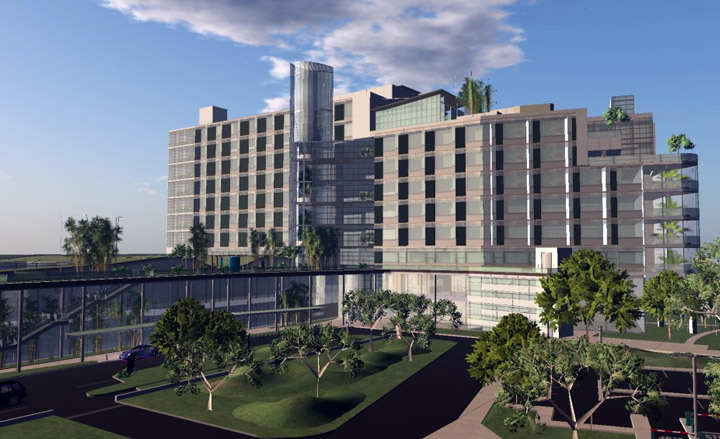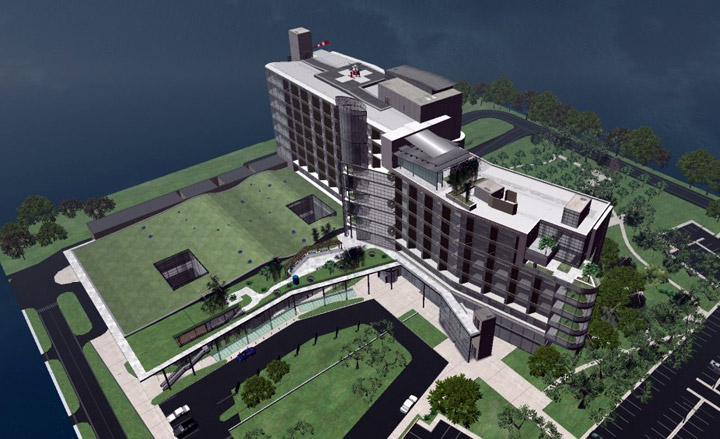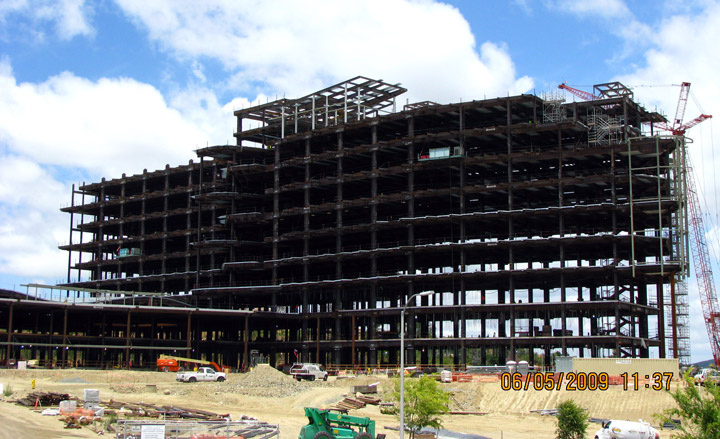Winy Maas of MVRDV talks to Second Life creator

'I didn't want to build a video game or a social network,' said Second Life creator Philip Rosedale at the 2010 John Edwards Lecture last week, organized by the Architectuere Foundation. 'I wanted to see what the world would look like if you built it from scratch through a computer server.'
Second Life has been a big player in the Internet realm since its creation in 2003 by tech-minded entrepreneur Rosedale and it has thrived; the entirely user-created experience now contains cities, islands and full natural landscapes and even boasts its own money (Linden dollars comes with its own USD exchange rate, since you ask). 'It is a real world, not an imaginary one. It is even an economic world. I wanted it to have a market dynamic,' explains Rosedale.
Although Rosedale originally planned to discuss Second Life with Dutch architect Winy Maas of MVRDV, he had to make a solo appearance, since Maas’ travel plans were delayed due to the snowy weather. Still, building design took a prominent spot in the talk, revealing architecture's multi-levelled relevance in this virtual world.
Even though one would think that in an imaginary, digital world where there is no feeling of cold or pain, the need for a roof over one’s head might be made redundant, this is certainly not the case. 'Interestingly, we still need walls and roof in Second Life,' says Rosedale. 'It's pretty intrinsic in our nature; architecture may be more human than it is physical.'
Architecture in Second Life is divided in two quite broad categories; buildings reminiscent of real (First?) life buildings – you might come across Frank Lloyd Wright’s Fallingwater – or completely imaginary buildings, created solely out of the users' (largely not architect-trained) imagination. Interestingly, swish contemporary minimal or modernist architecture, like Mies van der Rohe's Farmsworth House, would cost far less than a Gothic Castle; this is due to the extra computer power needed for create complex high resolution ornaments. Land also requires a certain amount of computer power, so new land in a world that would seemingly have infinite space, can also be priced, sold and bought, resulting in considerable and very real profits for a few Second Life users.
Giving the space and option to people to experiment with architecture – architects and non-architects alike – one of Second Life’s most interesting applications is as a platform for virtual and real life cross-feedback. A characteristic example is the recent case of park near LaGuardia, US. The local authorities recreated the virtual site in Second Life and encouraged people to creatively add their desired version for it, which the authorities then took in consideration for the design they commissioned, opening up a whole new interpretation for community involvement.
Maas arrived about ten minutes before the lecture’s closure, but despite this his insight on architecture and the role of the architect in Second and real life was compelling, pointing out that one does not even have to go on Second Life in order to see the issues and influence created by such advances of technology and digital representations in architecture of the real world. 'These days the buildings may not look as great as the best render,' he said, as the session drew to a close. Will people still appreciate the real life version if the digital world becomes increasingly powerful and ever more high res? It remains to be seen.
Receive our daily digest of inspiration, escapism and design stories from around the world direct to your inbox.

Architecture in Second Life is divided in two quite broad categories; buildings reminiscent of real (First?) life buildings – you might come across Frank Lloyd Wright’s Fallingwater – or completely imaginary buildings, created solely out of the users’ (largely not architect-trained) imagination

Frank Lloyd Wright’s Fallingwater in Second Life

Land also requires a certain amount of computer power, so new land in a world that would seemingly have infinite space, can also be priced, sold and bought, resulting in considerable and very real profits for a few Second Life users

Interestingly, swish contemporary minimal or modernist architecture, like Mies van der Rohe’s Farmsworth House, would cost far less than a Gothic Castle; this is due to the extra computer power needed for create complex high resolution ornaments.

’It is a real world, not an imaginary one. It is even an economic world. I wanted it to have a market dynamic,’ explains Rosedale.

An example of a built-up urban environment in Second Life

An example of modern housing in Second Life

’These days the buildings may not look as great as the best render,’ said Dutch architect Winy Maas of MVRDV. Pictured here is a rendering of the MVRDV-designed China Hills

The MVRDV-designed China Hills
Ellie Stathaki is the Architecture & Environment Director at Wallpaper*. She trained as an architect at the Aristotle University of Thessaloniki in Greece and studied architectural history at the Bartlett in London. Now an established journalist, she has been a member of the Wallpaper* team since 2006, visiting buildings across the globe and interviewing leading architects such as Tadao Ando and Rem Koolhaas. Ellie has also taken part in judging panels, moderated events, curated shows and contributed in books, such as The Contemporary House (Thames & Hudson, 2018), Glenn Sestig Architecture Diary (2020) and House London (2022).
-
 Year in Review: we’re always after innovations that interest us – here are ten of 2025’s best
Year in Review: we’re always after innovations that interest us – here are ten of 2025’s bestWe present ten pieces of tech that broke the mould in some way, from fresh takes on guitar design, new uses for old equipment and the world’s most retro smartwatch
-
 Art and culture editor Hannah Silver's top ten interviews of 2025
Art and culture editor Hannah Silver's top ten interviews of 2025Glitching, coding and painting: 2025 has been a bumper year for art and culture. Here, Art and culture editor Hannah Silver selects her favourite moments
-
 In Norway, remoteness becomes the new luxury
In Norway, remoteness becomes the new luxuryAcross islands and fjords, a new wave of design-led hideaways is elevating remoteness into a refined, elemental form of luxury